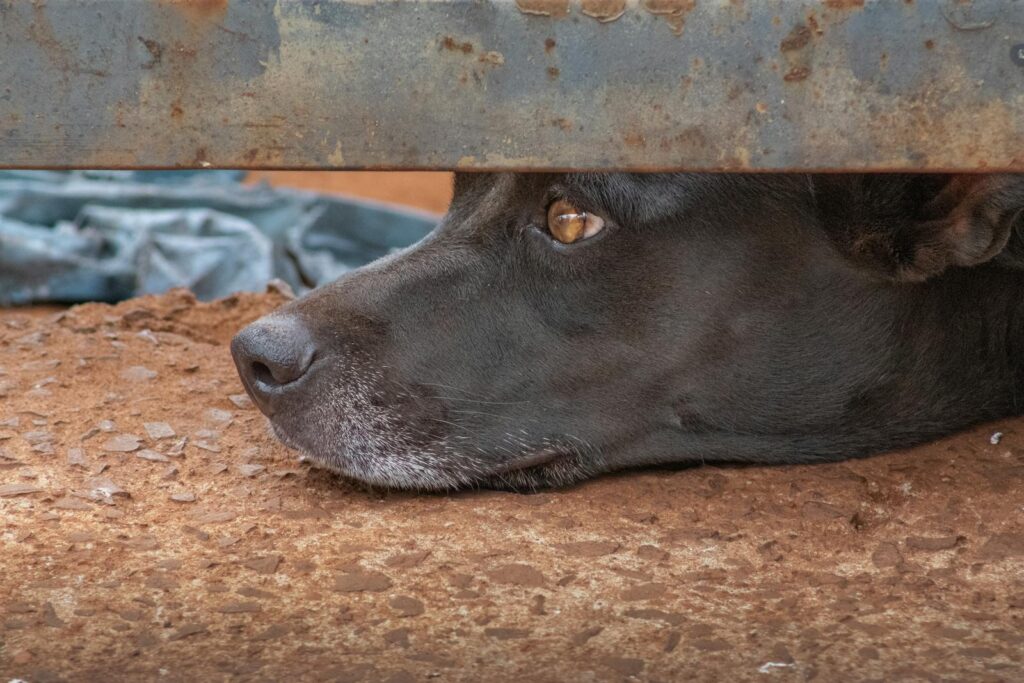15 Sad Effects of Long-Term Shelter Life on Dogs

For many dogs, shelters are meant to be a temporary stop before finding a forever home. But for some, weeks turn into months, and months into years. The longer a dog stays in a shelter, the more it affects their mental and physical well-being. Here are 15 sad effects of long-term shelter life on dogs and how it impacts their health, behavior, and chances of adoption.
Depression and Emotional Shutdown

Dogs are social animals that crave companionship, love, and stability. When they are confined to a shelter for too long, many begin to withdraw emotionally. They lose interest in play, stop wagging their tails, and may even refuse to interact with people or other dogs, showing signs of deep depression.
Increased Anxiety and Stress

Shelters can be loud, chaotic places filled with barking dogs, unfamiliar scents, and constant activity. Over time, this overstimulation can lead to chronic stress and anxiety. Some dogs develop nervous habits, like excessive licking, spinning in circles, or pacing in their kennels, showing that they feel trapped and overwhelmed.
Difficulty Trusting Humans

Many shelter dogs have already faced neglect or abuse before arriving. The longer they stay in a shelter environment without forming strong bonds with people, the harder it becomes for them to trust humans again. Some may start avoiding eye contact, flinching at touch, or retreating to the back of their kennel when approached.
Fear of New Experiences

Dogs that spend too much time in shelters miss out on crucial socialization opportunities. They don’t experience regular walks, car rides, or household noises. When they finally get adopted, they may react with fear and confusion to everyday things like stairs, televisions, or even grass—things they should have learned to navigate as puppies.
Behavioral Deterioration

A dog that enters a shelter may be well-behaved at first, but as time passes, the stress, boredom, and frustration of confinement can lead to problematic behaviors. They may develop jumping, excessive barking, food aggression, or destructive chewing, which sadly makes them less likely to be adopted.
Reduced Chances of Adoption

The longer a dog stays in a shelter, the harder it becomes for them to find a home. Potential adopters often overlook long-term shelter dogs in favor of younger, more socialized pets. Dogs that become withdrawn or develop behavioral issues due to prolonged confinement face even greater difficulty in getting adopted.
Muscle Atrophy and Weight Issues

Shelter dogs often don’t get enough exercise due to limited space and time for walks. This can lead to muscle loss, obesity, or weakened joints from spending too much time confined to a kennel. Some dogs lose weight due to stress, while others become overweight from inactivity, making it harder for them to stay healthy.
Loss of Basic Training and Social Skills

Even dogs that were once house-trained may forget their manners after months in a shelter. They may become overly excited when finally let out, pull on the leash, or struggle with commands they once knew. The lack of consistent training makes it harder for them to transition into a home environment.
Overattachment or Separation Anxiety

Some long-term shelter dogs become desperate for affection, clinging to any volunteer or visitor who shows them kindness. Once adopted, they may develop severe separation anxiety, fearing that their new family will abandon them just like before. This can lead to destructive behaviors, excessive whining, or difficulty being left alone.
Higher Risk of Illness

Shelters try their best to provide medical care, but with so many animals in one place, dogs are at a higher risk of contracting diseases like kennel cough, respiratory infections, and parasites. Long-term shelter dogs often have weaker immune systems due to stress, making them more vulnerable to illness.
Loss of Hope and Emotional Shut-Down

Some dogs give up after months or years in a shelter. They stop reacting when people walk by, no longer wag their tails, and sit in their kennels with a distant, empty look in their eyes. This emotional shutdown is heartbreaking, as it means they’ve lost hope of ever finding a loving home.
Development of Repetitive or OCD-Like Behaviors

With little stimulation, some dogs develop obsessive, repetitive behaviors like tail-chasing, chewing on kennel bars, or licking themselves raw. These behaviors can be difficult to break, even after adoption, requiring extensive patience and training to help the dog feel safe and mentally engaged again.
Increased Aggression Toward Other Dogs

Being surrounded by stressed, barking dogs for months or years can make a shelter dog less tolerant of other animals. Some become defensive and reactive toward other dogs, even if they were once friendly. This makes it harder for them to be placed in homes with existing pets.
Lack of Connection with People

Long-term shelter dogs don’t experience the strong human-animal bond that dogs in homes do. Without regular cuddles, training, and family interactions, they may struggle to bond with people after adoption. Some dogs act distant or uninterested in affection simply because they’ve forgotten what it feels like to be loved.
Facing Euthanasia Due to Overcrowding

Perhaps the saddest reality is that many long-term shelter dogs run out of time. In overcrowded shelters, dogs that are repeatedly overlooked are sometimes euthanized to make space for new arrivals. Despite their potential for love and companionship, they never get the chance to experience a home of their own.





